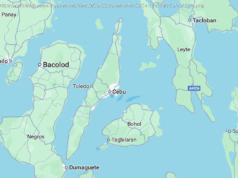The fine print in these two new plans requires choices on video quality and hot-spot use.
Q. Verizon went from one unlimited plan to two, and the cheaper one has some new fine print. Will I mind those limits?
A. Wednesday’s shift by the nation’s largest wireless carrier to offer a choice of plans with “unlimited” data (both contain enough restrictions to make “unmetered” a more accurate description) adds some math and fine-print perusal to your service shopping.
In place of the $80 offering Verizon introduced in February, the carrier now leads off its unmetered-data choices with a $75 “Go Unlimited” deal ($130 for two lines, $150 for three and $160 for four) that demands significant compromises. Think of this as the equivalent of “Basic Economy” airfares that unbundle many traditional features of air travel.
• Go Unlimited caps the resolution of streaming video at 480p, the same quality as a DVD. On a tablet, you get 720p, the minimum resolution for high-definition TV. That’s well below the capabilities of screens on either type of device.
• Bandwidth you share with nearby devices via WiFi—called mobile-hotspot use or tethering —is cut all the way back to 600 kbps, even worse than the typically wretched WiFi at tech trade shows like CES .
• You will see your speed “deprioritized” if your phone connects to a tower experiencing congestion, even if you haven’ t used up any data yourself in the current billing cycle.
A new $85/month “Beyond Unlimited” plan—$160 for two lines, $180 for three lines and $200 for four—ups the streaming-video resolution limit to 720p on phones and 1080p, or “full HD, ” on tablets and offers 15 gigabytes of full-speed hotspot use a month.
It also doesn’ t risk de-prioritization until you’ ve used up 22 GB of data in the current billing cycle, and it throws in free roaming in Canada and Mexico.
Note that on both unlimited plans, you need to enable automatic payments from a bank account or debit card–sorry, cash-back credit-card users —or the price goes up by $5 a line.
Many users may not mind the lowered video quality enough to pay $10 extra.
“I think the reality is that most users won’ t notice being served up 480p instead of 780p, ” wrote analyst Jan Dawson of Jackdaw Research in an e-mail. He pointed to T-Mobile’s earlier imposition of the same 480p limit: “The reaction to T-Mobile’s BingeOn suggests that lots of people are fine with lower-quality but adequate video on a small screen if it saves bandwidth.”
Hotspot use is different. NPD Group analyst Brad Akyuz wrote that the research firm’s opt-in monitoring of smartphone users found that 20% used that feature—and of those, 41% employed it weekly and 16% daily.
But another NPD finding suggests a better option for some at Verizon: a 5 GB single-smartphone plan that Verizon doesn’ t advertise much. This costs just $55 a month if you enable automatic payments from a bank or debit card, $60 otherwise, and imposes no video-resolution or hotspot-speed limits.
If you exceed 5 GB, its “Safety Mode ” 2G access ensures you can still get directions and send e-mail. If you don’ t use up your data, you can carry the balance over to the next month. Except for T-Mobile, other carriers also offer cheaper plans with limits on data but not on how you use each month’s allotment of it. They often don’t need a ton. As of June, U. S. smartphone users average 5.2 GB of cellular data a month, according to Akyuz.
But if you need multiple lines of data, Verizon’s 5G plan is no good. And if average data use keeps going up, even 5 GB may not seem like much a year from now.
(Disclosure: I also write for Yahoo Finance, a subsidiary of Verizon’s media division Oath.)
Rob Pegoraro is a tech writer based out of Washington, D. C. To submit a tech question, e-mail Rob at rob@robpegoraro.com. Follow him on Twitter at twitter.com/robpegoraro .






